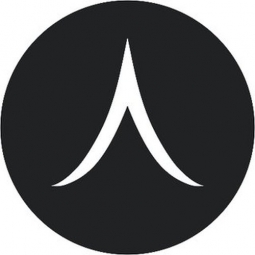Download PDF
Partnerships in Supply Chain Innovation
Technology Category
- Platform as a Service (PaaS) - Connectivity Platforms
Applicable Functions
- Logistics & Transportation
Use Cases
- Supply Chain Visibility
- Remote Asset Management
Services
- System Integration
The Challenge
Motus Freight was facing a significant challenge due to the large amount of manual work involved in routine shipments. This was not only time-consuming but also inefficient. The company's vision was to create 'the perfect shipment' - a streamlined, automated system that would unite their supply chain and enhance productivity. The challenge was to transform their existing processes and systems to achieve this vision.
About The Customer
Motus Freight is a logistics and transportation company that was struggling with the inefficiencies of manual work in their routine shipments. The company had a vision of creating 'the perfect shipment', which would be a streamlined, automated system that would unite their supply chain and make them more productive. The company recognized that the manual work involved in their operations was a significant challenge, but also saw it as a big opportunity for improvement and growth.
The Solution
Motus Freight partnered with Turvo to unify their supply chain and move closer to achieving 'the perfect shipment'. The solution involved automation that connected billing teams with PODs, in-context messaging, and rules to surface exceptions. This allowed Motus to seize new opportunities. The Turvo Workbench was used for exception management, enabling reps to focus only on the most important, time-sensitive items. The solution also ensured zero disruption in their business due to COVID-19 lockdowns and the shift to working from home. The implementation of the solution resulted in 95% less manual work per connected shipment, enabling individual reps to manage more shipments with less hassle. The solution also provided one authoritative record of everything connected to a shipment, making everything from routine billing to one-off audits easy and painless.
Operational Impact
Quantitative Benefit
Related Case Studies.
.png)
Case Study
Improving Vending Machine Profitability with the Internet of Things (IoT)
The vending industry is undergoing a sea change, taking advantage of new technologies to go beyond just delivering snacks to creating a new retail location. Intelligent vending machines can be found in many public locations as well as company facilities, selling different types of goods and services, including even computer accessories, gold bars, tickets, and office supplies. With increasing sophistication, they may also provide time- and location-based data pertaining to sales, inventory, and customer preferences. But at the end of the day, vending machine operators know greater profitability is driven by higher sales and lower operating costs.

Case Study
Remote Temperature Monitoring of Perishable Goods Saves Money
RMONI was facing temperature monitoring challenges in a cold chain business. A cold chain must be established and maintained to ensure goods have been properly refrigerated during every step of the process, making temperature monitoring a critical business function. Manual registration practice can be very costly, labor intensive and prone to mistakes.

Case Study
Remote Wellhead Monitoring
Each wellhead was equipped with various sensors and meters that needed to be monitored and controlled from a central HMI, often miles away from the assets in the field. Redundant solar and wind generators were installed at each wellhead to support the electrical needs of the pumpstations, temperature meters, cameras, and cellular modules. In addition to asset management and remote control capabilities, data logging for remote surveillance and alarm notifications was a key demand from the customer. Terra Ferma’s solution needed to be power efficient, reliable, and capable of supporting high-bandwidth data-feeds. They needed a multi-link cellular connection to a central server that sustained reliable and redundant monitoring and control of flow meters, temperature sensors, power supply, and event-logging; including video and image files. This open-standard network needed to interface with the existing SCADA and proprietary network management software.

Case Study
Marine and Industrial Displays by Caterpillar
Caterpillar needed a flexible platform for a new generation of connected human-machine interfaces across a wide variety of industrial environments. Examples include marine, petroleum pumping, generators, custom hydraulics, mining, and rail applications.







